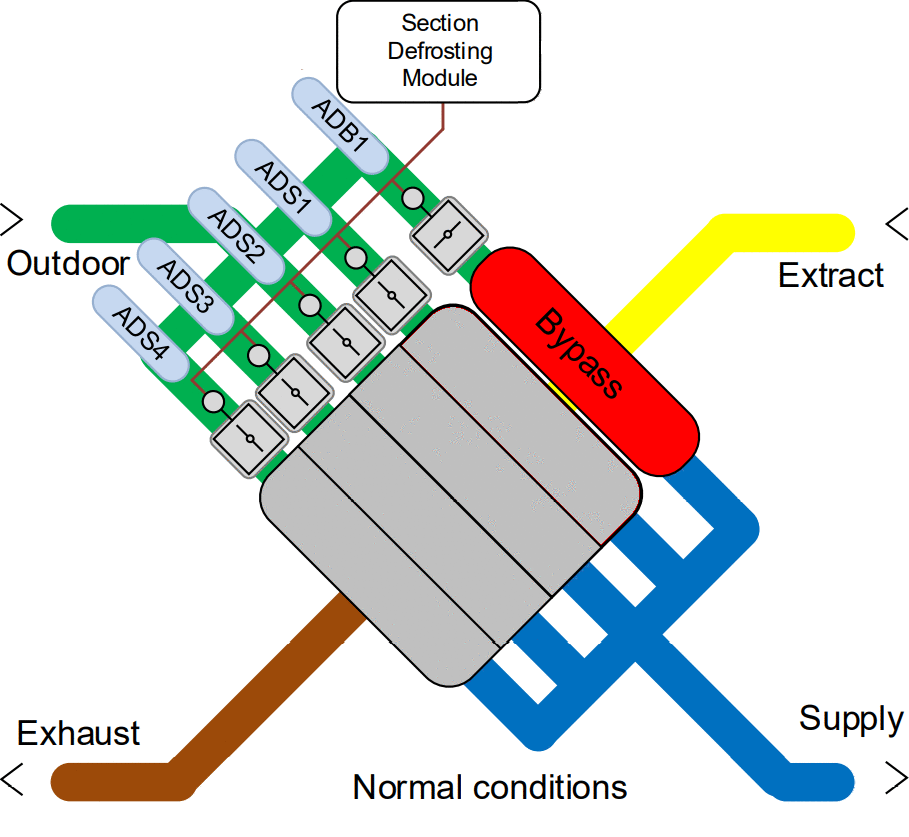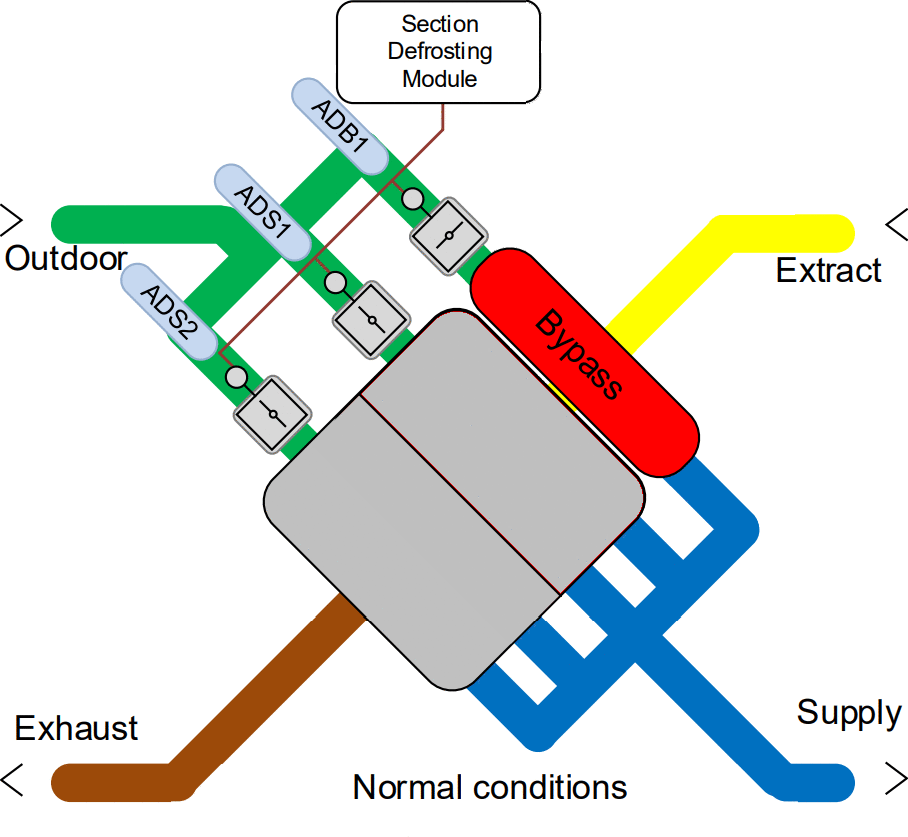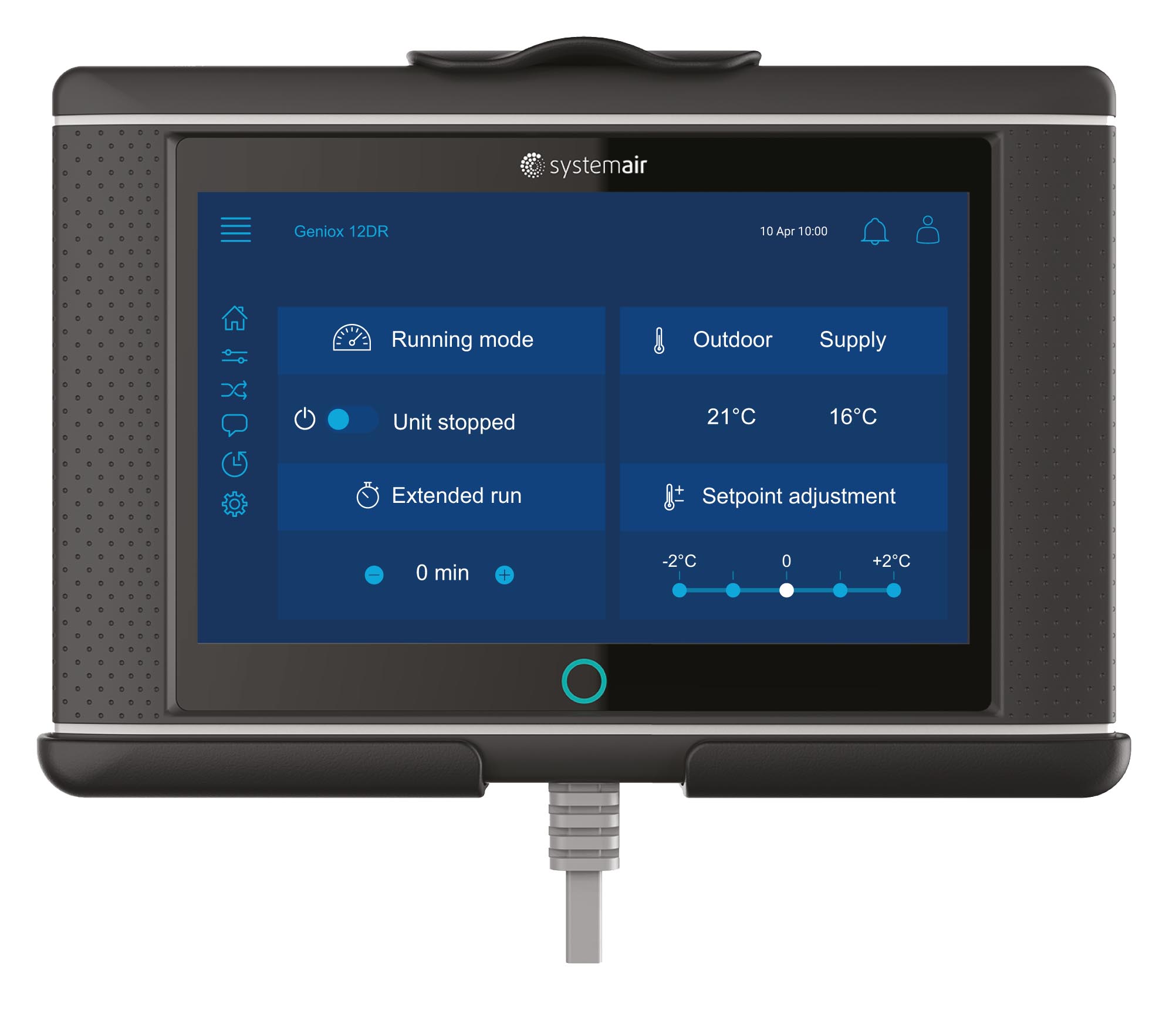|
Access 4.x |
Sectional defrosting |
The damper of the plate heat exchanger is divided into 2, 3 or 4 individual sections. Each of the damper sections can be individually opened and closed by the modulated actuator. The bypass damper is opened and closed by its own modulated actuator. The set of damper actuators is directly controlled by the section defrosting module DM50-C.
When defrosting is not active, all sections across the heat exchanger are interlocked and follow the heat recovery signal from the main controller: The section dampers open and bypass closes proportionally to the increase of the heat recovery signal (and vice versa).
Defrosting is enabled when exhaust air (or Defrosting) sensor is reading a temperature below -3 oC.
The differential pressure transmitter is used to measure the drop of the air pressure over the exchanger's extract - exhaust sides. The section defrosting module is activated and defrosting starts if the differential pressure exceeds the calculated limit.
Once activated the section defrosting module performs sequential closing of each section. Only one section is closed at a time.
The section remains closed and defrosted by passing extract-exhaust air flow for the preset time. The section defrosting module then switches to the next section.
The sequence continues while the defrosting signal from the main controller is present.
If the defrosting signal from the main controller is still active upon completion of the sequence - the defrosting sequence will repeat.

During the defrosting sequence the bypass might remain closed or be opened (to preset position) to compensate for the pressure drop increase.
This function is used in combination with the heat exchangers where closing of one section results in a significant pressure drop (exchangers with only 3 or 2 sections).

Important!
Opening the bypass during defrosting reduces the efficiency - compensation with a larger heating coil is needed.
This results in increased operating costs, related to the increased fan consumption with a closed bypass damper.
Related topics:
Setting connection to the DM50-C
